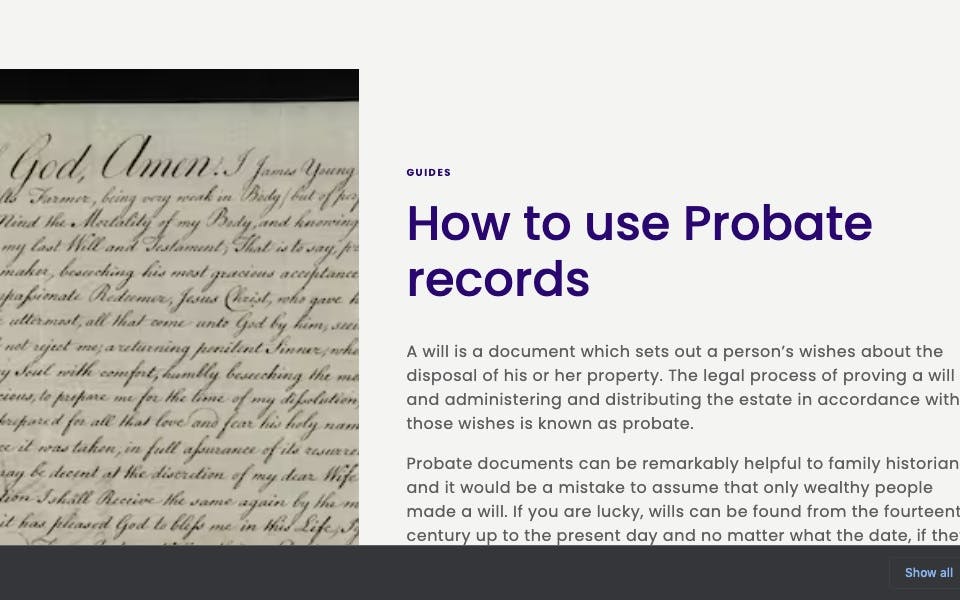
Probate Research: A Quick Guide to Executors
EXECUTOR as a term applies to a male. The female equivalent is EXECUTRIX. Probate is the process of proving a Will. This involves executors applying for and being issued with a 'Grant of Probate'. This confirms their legal authority to administer the money, property and possessions of the deceased. Probate records are one of the most useful records a family historian can access, and one of the most important elements within probate record are the detail concerning executors.
The person making a will or giving a legacy is the testator. A testator appoints executors to prove the will and satisfy a court that it is valid. Typically there would be one, two or three named executors and the identify of these executors could provide clues about familial relationships and friendships.
Once the court has granted probate, the executors are free to carry out the testator’s wishes. This decision is recorded in the probate ACT BOOK.
Where no will has been made, an individual is said to have died INTESTATE. In such cases, a relative or creditor can apply for letters of ADMINISTRATION (or ADMON) and so will be known as the ADMINISTRATOR or ADMINISTRATRIX. Administrations can also be granted if the executor of the will predeceases the testator or renounces (refuses to act in such a capacity).
There may be documents amongst family papers that were never presented before a court. For example, executors may have rendered accounts. Early wills may also have accompanying documents such as INVENTORIES, listing in detail the value of the testator’s property room by room.

How to Use Wills in Family History
Wills can provide clues to help you progress in your family history research and expand your family tree.
The names of executors are valuable clues. Always make sure to identify each executor. Often they are either legal representatives or family members. Commonly, the next of kin, such as a spouse, is the executor. The name written on the grant of probate may reveal a new spouse, if the deceased has remarried, for example. You may believe you know all relatives in your tree. However, it is not always easy to spot later marriages. If a marriage took place overseas, for example, or was badly transcribed in the registration index, it could be easy to miss.
Children of the deceased often appear as executors. For genealogists, it is always exciting to find daughters of the deceased with a previously unknown married name - or sons-in-law that had not been previously identified. Both cases indicate a daughter (or daughters) has married and should direct you to a search for their marriage details, as well as possible offspring.
Other named executors may be business partners, close friends, or neighbours. Whoever they were, it is likely that your ancestor trusted them and possibly knew them well. Use the census to help you identify them, checking against any address given on the grant. Online newspaper archives may reveal interesting socio-cultural information and give an insight into their characters. By searching further into the lives and identities of these executors you could discover details about the lives and interests of your ancestor that may have lain unknown otherwise.
Where can I learn more about Probate Records?
To find out more about probate records, including where to find them, check out the Society’s guide on How To Use Probate Records.
Join us
As a member, you can make the most of our resources, access our experts, and find a welcoming community of people interested in family history and genealogy.
We all have roots. Let’s find them together.
